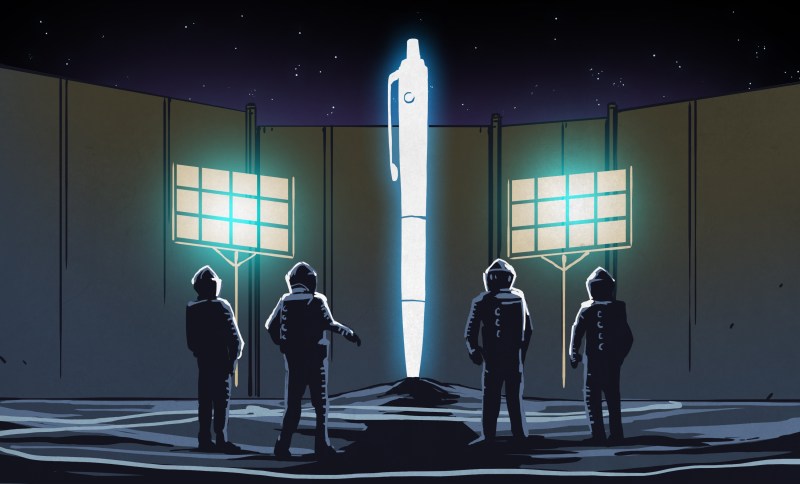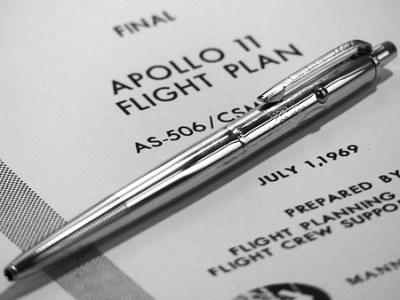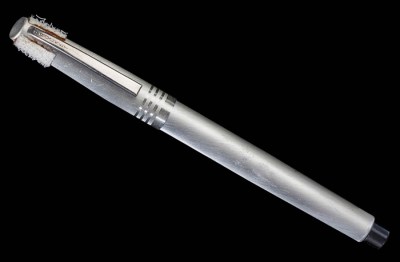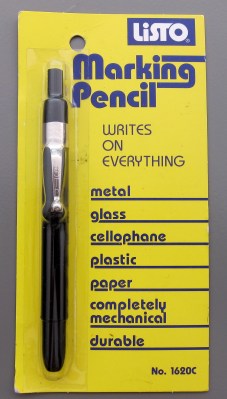
We’ve all heard of the Fisher Space Pen. Heck, there’s even an episode of Seinfeld that focuses on this fountain of ink, which is supposed to be ready for action no matter what you throw at it. The legend of the Fisher Space Pen says that it can and will write from any angle, in extreme temperatures, underwater, and most importantly, in zero gravity. While this technology is a definite prerequisite for astronauts in space, it has a long list of practical Earthbound applications as well (though it would be nice if it also wrote on any substrate).
You’ve probably heard the main myth of the Fisher Space Pen, which is that NASA spent millions to develop it, followed quickly by the accompanying joke that the Russian cosmonauts simply used pencils. The truth is, NASA had already tried pencils and decided that graphite particles were too much of an issue because they would potentially clog the instruments, like bags of ruffled potato chips and unsecured ant farms.
A Space-Worthy Instrument Indeed
Usually, it’s government agencies that advance technology, and then it trickles down to the consumer market at some point. But NASA didn’t develop the Space Pen. No government agency did. Paul Fisher of the Fisher Pen Company privately spent most of the 1960s working on a pressurized pen that didn’t require gravity in the hopes of getting NASA’s attention and business. It worked, and NASA motivated him to keep going until he was successful.

Then they tested the hell out of it in all possible positions, exposed it to extreme temperatures between -50 °F and 400 °F (-45 °C to 204 °C), and wrote legible laundry lists in atmospheres ranging from pure oxygen to a total vacuum. So, how does this marvel of engineering work?
The Fisher Space Pen’s ink cartridge is pressurized to 45 PSI with nitrogen, which keeps oxygen out in the same manner as potato chip bags. Inside is a particularly viscous, gel-like ink that turns to liquid when it meets up with friction from the precision-fit tungsten carbide ballpoint.
Between the viscosity and the precision fit of the ballpoint, the pen shouldn’t ever leak, but as you’ll see in the video below, (spoiler alert!) snapping an original Space Pen cartridge results in a quick flood of thick ooze as the ink is forced out by the nitrogen.
By 1966, the Pen was ready and took its first trip to space on the Apollo 7 mission. These days there are 80 different models of Space Pen, but only two of them are NASA-approved: the original AG-7 (anti-gravity) which is used in flight, and the Shuttle model, dozens of which are floating around the ISS for general use.
Apollo’s Other Pen

Here’s another myth you might have heard: this pen saved the Apollo 11 mission. But no, that was actually a felt-tip pen made by Duro. On the way back into Eagle after the EVA, Buzz Aldrin’s giant backpack broke a circuit breaker off the panel. It happened to be an important one that activated the ascent engine that was supposed to get them off the Moon.
Armstrong and Aldrin had jettisoned many of their tools already, but they still had their pens. After a few hours of sleeping on the problem, Aldrin though to shove his pen into the panel while Tranquility Base nervously clicked their BiCs back in Houston. It worked (obviously), and they were able to lift off and rendezvous with Collins in the capsule.
Fun fact: the Duro that’s on display at National Air & Space Museum is actually Michael Collins‘ pen — Buzz Aldrin keeps his at home next to the broken circuit breaker.
Earthbound Misfit?

The Fisher Space Pen may be perfect for all extreme applications and environments, from underwater to the vacuum of space, but apparently they can be frustrating here on Earth. But you can’t really expect to have a fine writing experience with something that’s meant to write for extreme situations, can you?
Although I’ve always sort of wanted a Space Pen for obvious nerd-tastic reasons, I loathe using ballpoints and therefore can’t justify the cost to myself. Our own [Tom Nardi] has one and says they’re crap. They may write in any condition, but they are ‘rough to use’ and ‘the ink (didn’t) flow well’. Then again, his might be a dud, as it was procured from Staples in the early 2000s when there were counterfeit Pens about. Lots of people say that they have to use more pressure than normal because of the gooey ink.
We sort of wonder why NASA didn’t go with grease pencils. Possibly the particles thing again? Mechanical grease pencils were already a thing by then, so it couldn’t have been the ‘wee bits of paper everywhere’ excuse. Or maybe it’s just that grease pencils don’t write finely enough, or that their marks can easily be smudged.
NASA still uses Fisher Space Pens today, and so does Space X. As for the Russians, they started buying Fisher Space Pens not long after NASA did, way back in 1967.
0 Commentaires